When you hear talk of 99 years nowadays, it’s usually in the context of something like Chicago giving a private operator a 99-year lease to run the City’s parking meters. But today, we have something else in mind.
The 1964 book by James D. Johnson called it “A Century of Chicago Streetcars,” but it was really 99 years, since the first horsecar ran on April 25, 1859, and the last PCC on June 21, 1958. Last weekend was the 56th anniversary of the latter event, which means you would have to be at least 60 years old to remember much about Chicago streetcars.
It was a double anniversary, in fact, since the Illinois Terminal abandoned its suburban line between St. Louis and Granite City on June 21, 1958 as well, marking the end of street railway service in Illinois, just about 12 hours after Chicago.
At its peak, Chicago had the largest street railway system in the world, and what took 90 years to build up, took only about 10 years to dismantle. In the opinion of this author, the nation “threw out the baby with the bath water,” and now has to spend large sums of money to bring back a miniscule portion of the transit network we once had, and could have kept, if there had been the public will.
Today, the IT line between St. Louis and Granite City would be considered “light rail,” and would be a cherished asset if it had survived. Streetcar service ended in St. Louis in 1966, but by 1993, the MetroLink light rail system began serving the area, and now covers 46 miles of trackage. So, what goes around sometimes does come around.
Chicago did flirt with light rail a few times, most notably with the aborted plan to build a Downtown“Circulator” in the 1980s and 1990s, but for the foreseeable future, it seems that local transit will either be commuter rail, rapid transit, or bus.
We will celebrate Chicago’s iconic red streetcars this Friday at the June CERA meeting hosted by longtime member Bernard Rossbach. We hope you can join us.
In a short time, CERA will release Bulletin 146, Chicago Streetcar Pictorial The PCC Car Era 1936-1958. Copies are available now for pre-order.
Illinois Terminal was the subject of our January program given by Robert Heinlein, with additional material by Ray DeGroote.
Until then, we pay tribute to Chicago streetcars and the Illinois Terminal Railroad with this photo essay.
-David Sadowski
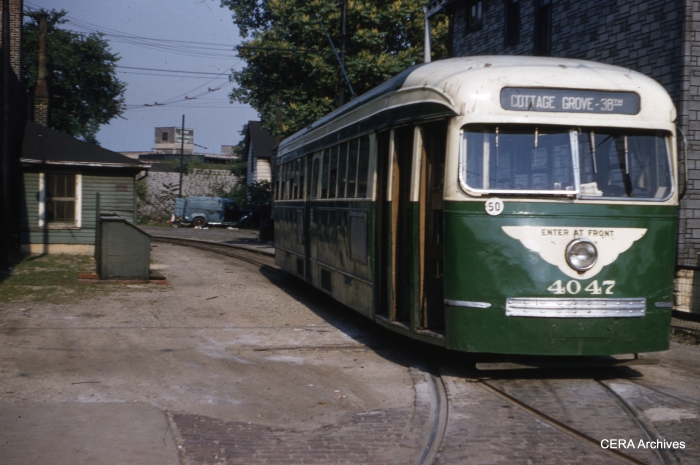
In CTA colors, pre-war PCC 4047 prepares to leave the turnback loop at Cottage Grove and 72nd in this June 1955 photo, just before the end of streetcar service on route 4. (Richard C. Cerne Photo – CERA Archives)
PS- From the 1937 Chicago Surface Lines Rules for Conductors, Motormen and Operators:
Providing efficient transportation for a great city is a most essential industry. Those engaged in it are performing a public service second to none.
This fact should be uppermost in the mind of each street railway employee.
He should never forget that he is a public servant, responsible for the safety and comfort of those who use street cars and buses and whose fares pay his wages.
If he is a good public servant he will be courteous, neat in appearance, careful in the performance of his duties and always on the alert for an opportunity to render an extra measure of service.
The trainman’s work is exacting. It calls for patience and resourcefulness. Demonstration of these qualities is essential to success in street car and bus operation.
The rules given in this book are the result of years of experience and the best judgment of practical men. It is necessary that trainmen familiarize themselves with them and adhere to them consistently.
-GUY A. RICHARDSON
President.
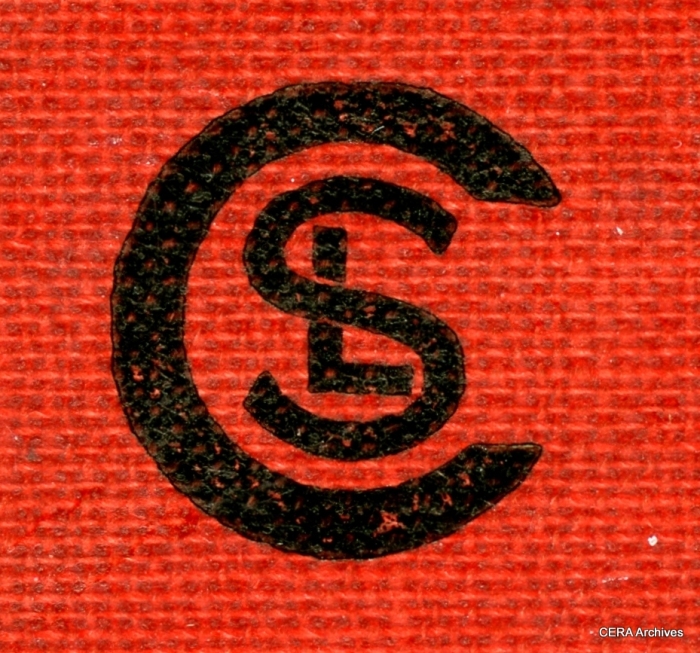
The famous CSL logo, from the 1937 rule book.
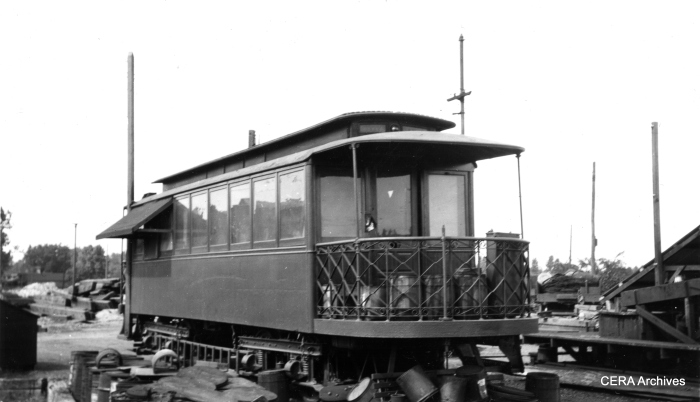
The caption reads “Sunbeam,” ex-party car. (R. J. Anderson Photo – CERA Archives)
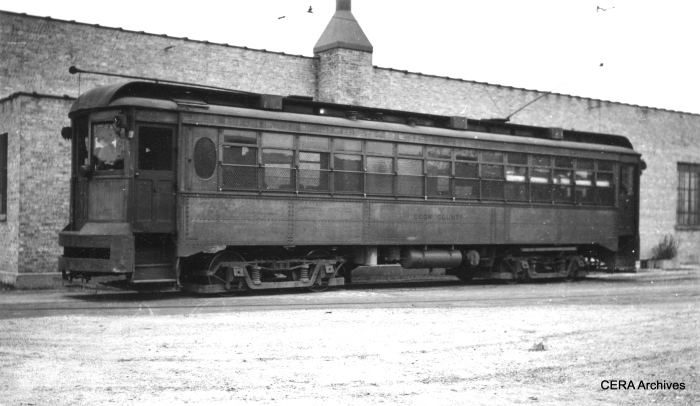
Cook County #1 was used by the Surface Lines to transport mental patients to the institution called Dunning on the city’s northwest side. (R. J. Anderson Photo – CERA Archives)
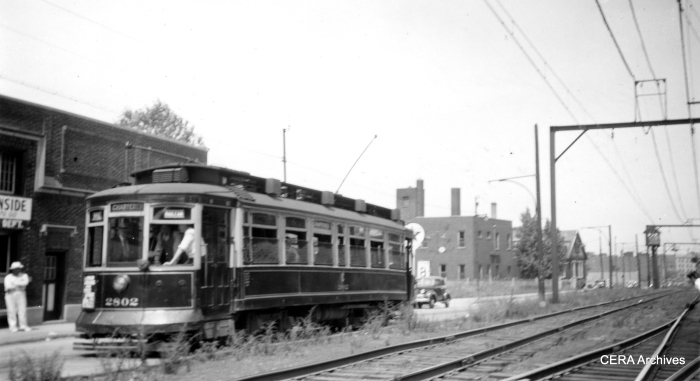
City car 2802 on a “Railfan Special.” (R. J. Anderson Photo – CERA Archives)
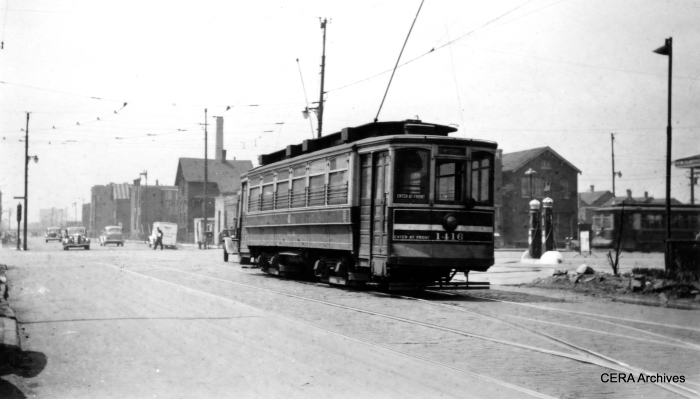
One-man city car 1416. Note the classic gas pumps at right. (R. J. Anderson Photo – CERA Archives)
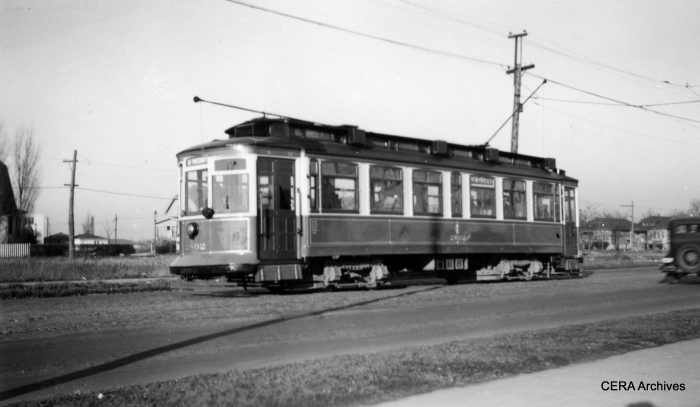
CSL city car 2802. (R. J. Anderson Photo – CERA Archives)

One-man car 3098. (R. J. Anderson Photo – CERA Archives)
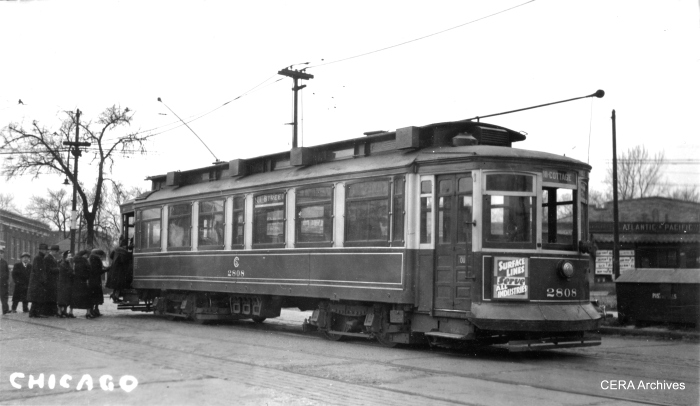
CSL city car 2808. (Slyford Photo – CERA Archives)
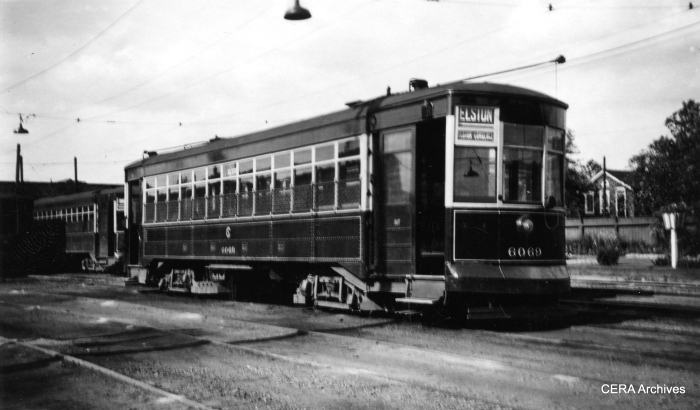
CSL 6069 on the Elston route. (R. J. Anderson Photo – CERA Archives)
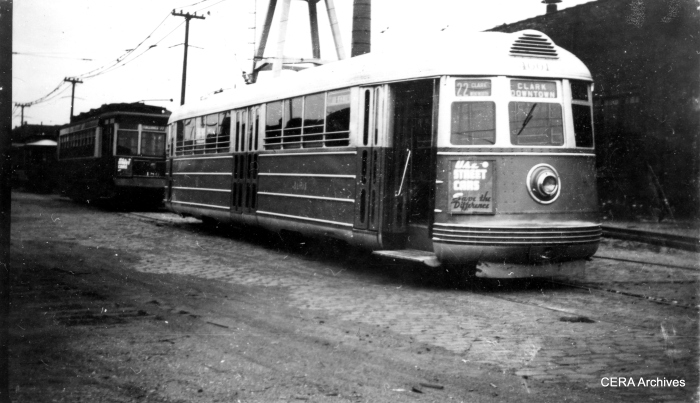
Pullman-built experimental pre-PCC car 4001 at South shops in the late 1930s. (R. J. Anderson Photo – CERA Archives)
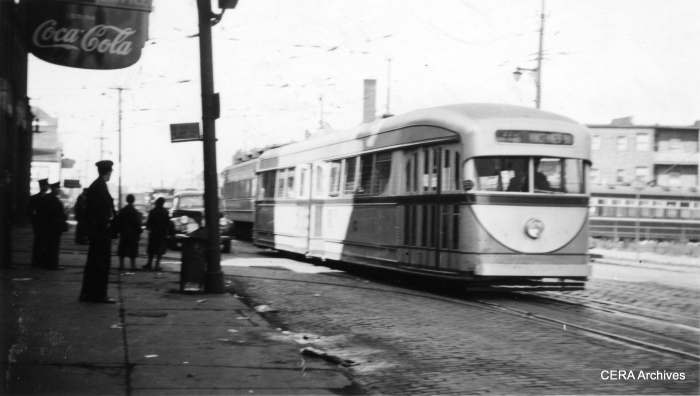
Experimental CSL pre-PCC 7001 at Clark and Schreiber by the Devon Station (carbarn) in the late 1930s. (R. J. Anderson Photo – CERA Archives)
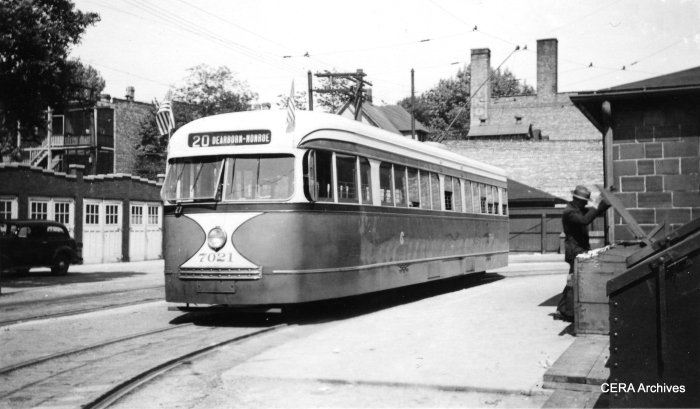
Pre-war PCC 7021 at Madison and Austin circa 1940. (R. J. Anderson Photo – CERA Archives)
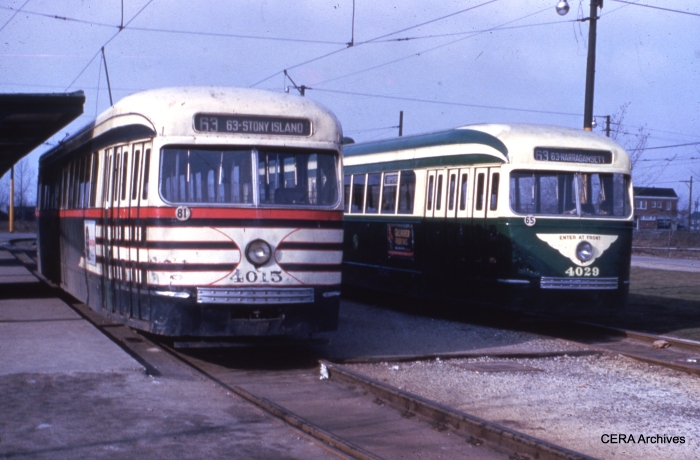
CTA streetcars 4015 and 4029 are part of the same 1936 CSL order for 83 cars, yet look much different. 4015 is still in its CSL “tiger stripes,” meant to alert motorists that these cars were wider than previous ones, while 4029 is in the newer CTA green and creme. This picture was probably taken early in 1952. The scene is 63rd and Narragansett, the west end of the line.
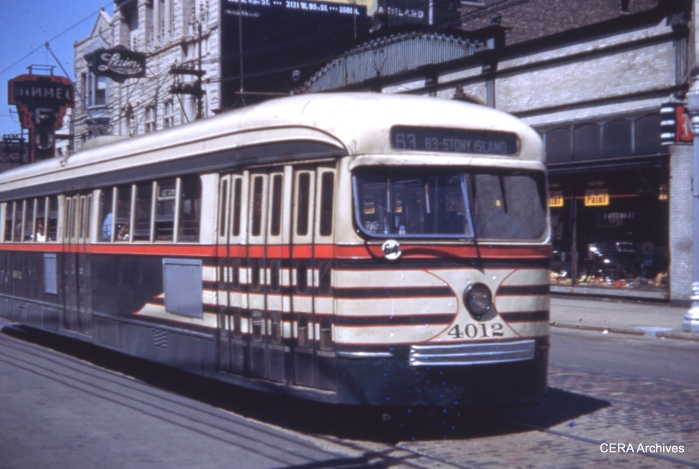
Pre-war PCC 4012 heads east at 63rd and Harvard in this June 1950 view.
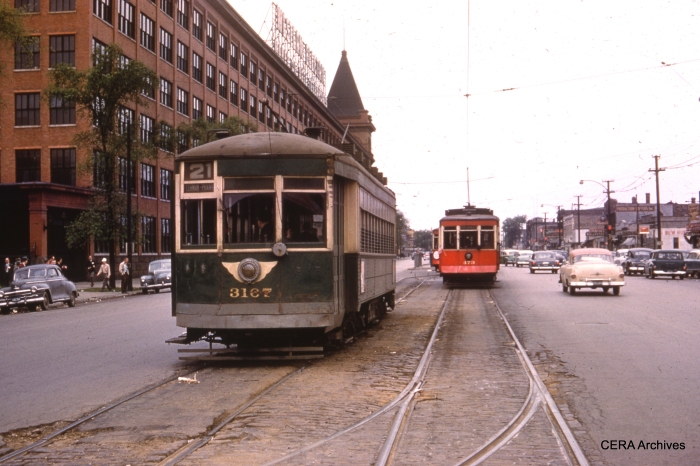
CTA 3167, the regular service car, prepares to go out ahead of 473 and 479, the fantrip cars, in this May 16, 1954 scene at the west end of the route 21 Cermak line. The famous Western Electric plant is at left. These cars looked much better in CSL red than they did in CTA green.
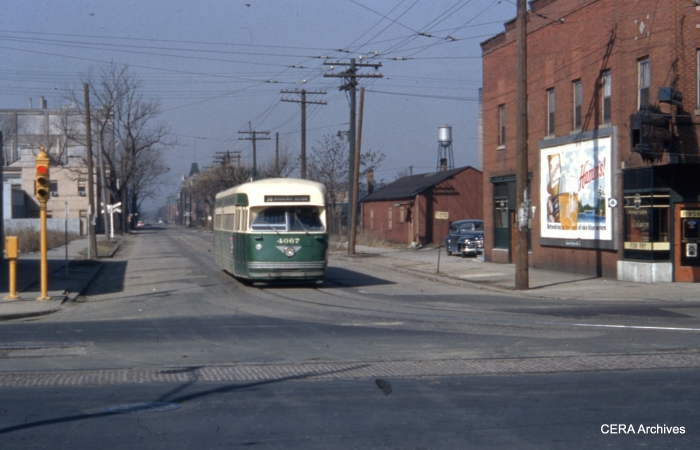
At the south end of the long 36-Broadway-State line, Pullman-built PCC 4067 prepares to make the turn at 120th and Halsted on March 21, 1954. Tracks of the former Chicago and Interurban Traction Company are in the foreground.
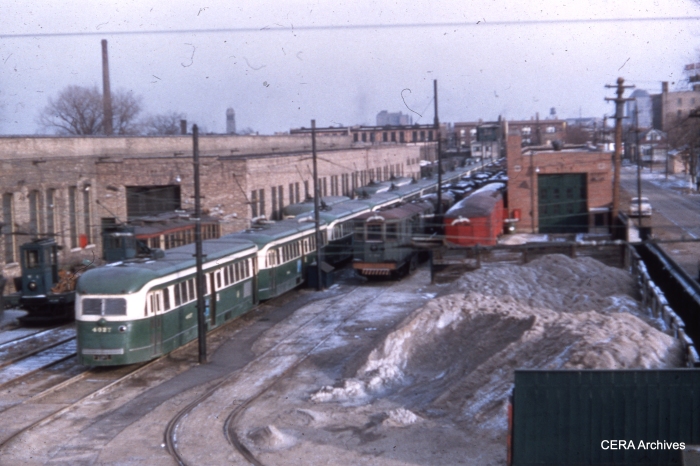
CTA 4027 and a lineup of pre-war PCCs at Devon Station (car barn) in January 1956. These cars were used on route 49-Western from June 18, 1955 to June 17, 1956.
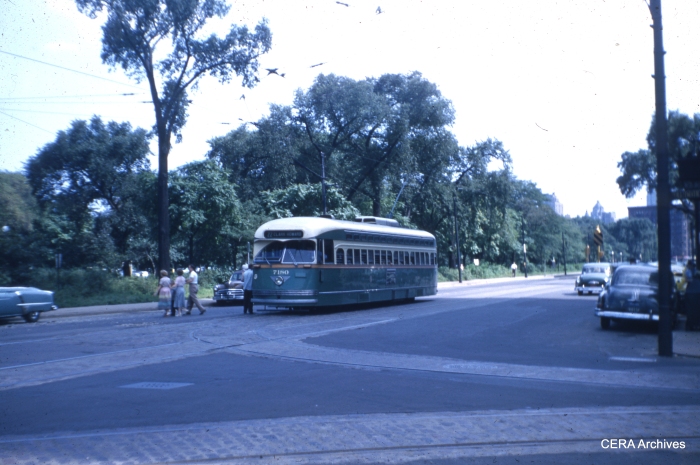
Car 7180, northbound at Clark and Wells on route 22, discharges passengers near Lincoln Park in the mid-1950s.
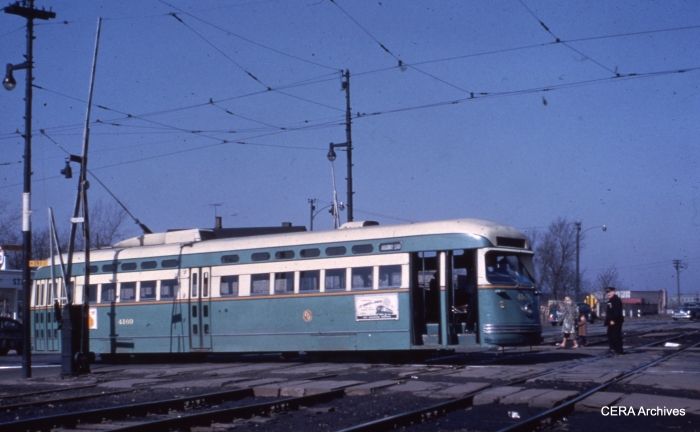
Car 4169 crosses the PRR Panhandle at Halsted and 119th, while the conductor acts as flagman, in this 1950s view.
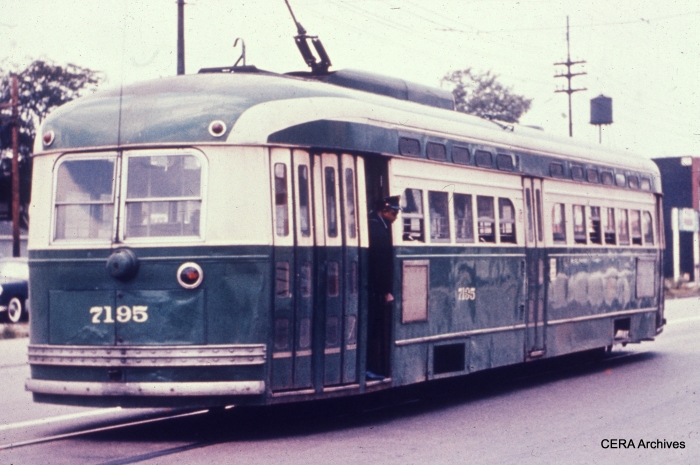
Post-war PCC 7195 on the wye at 81st and Halsted. Chicago’s PCCs were unique in having three sets of doors, which allowed them to scoop up lots of passengers. The conductor would then collect fares while the car was moving.
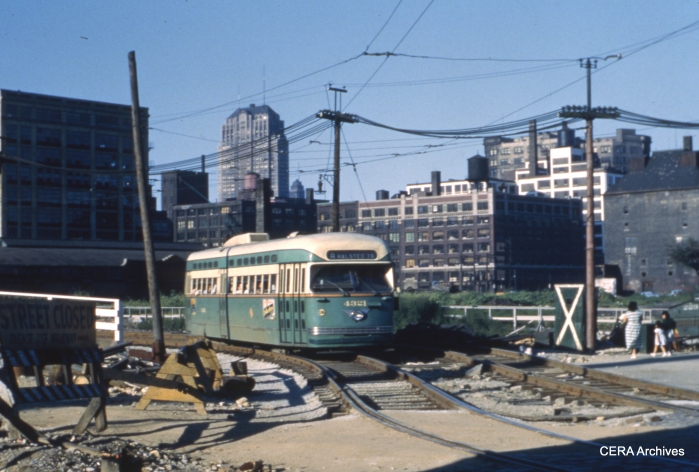
Post-war PCC 4321 negotiates shoo-fly trackage on Halsted, related to construction of the Congress Expressway, in this 1952 scene.
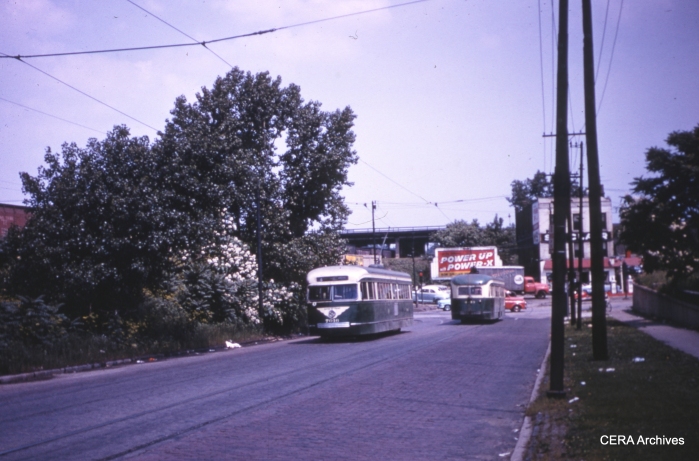
CTA pre-war PCC 7016 on Cottage Grove looking north toward 95th street. The car will enter private right-of-way paralleling the roadway just behind the photographer.
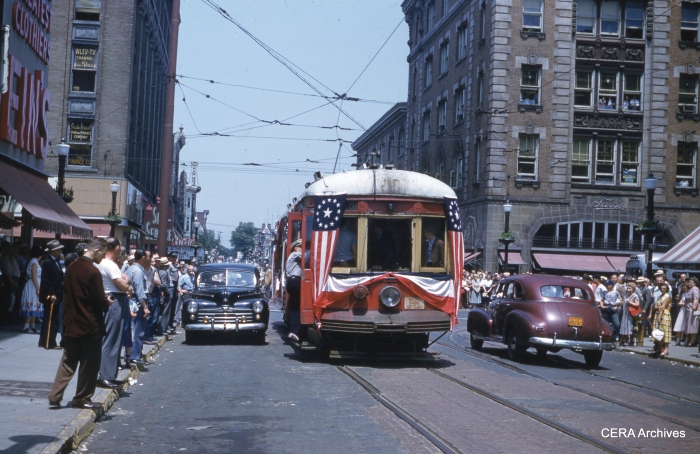
Some cities commemorated the end of trolley service with parades, ceremonies, pomp and circumstance. An example is Lehigh Valley Transit’s car 912, the “last car” in service in Allentown PA on June 8, 1953. Chicago took no special note of the end of streetcar service five years later. (Charles Houser Photo – CERA Archives)
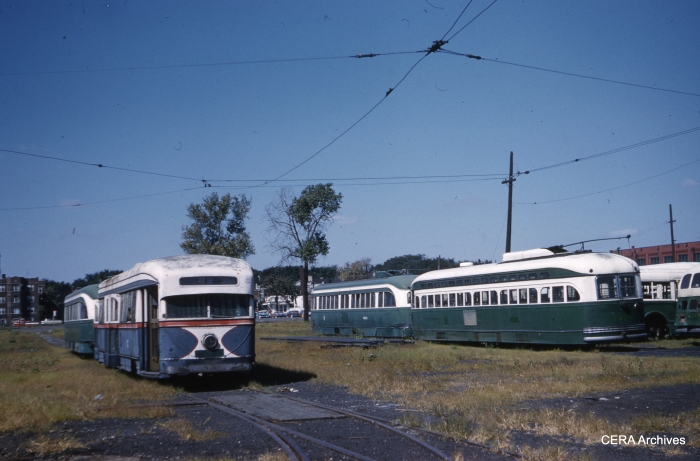
It’s September 10, 1959, and there has been no Chicago streetcar service for more than a year, yet a few forlorn cars remain on the property at South Shops. Visible are cars 7001 (the experimental 1934 Brill pre-PCC), a post-war car, 4021, and at least one additional prewar car. (Clark Frazier Photo – CERA Archives)
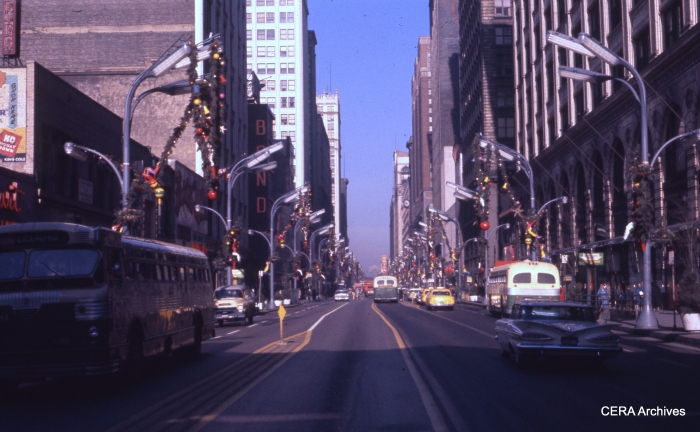
Barely two years after the last streetcar ran on State Street, the urban landscape has changed so much that you would hardly know there ever was such a thing as a streetcar. The “preying mantis” street lights, apparently ready to defend the city against giant caterpillars, are a prominent feature in this December 1959 view.
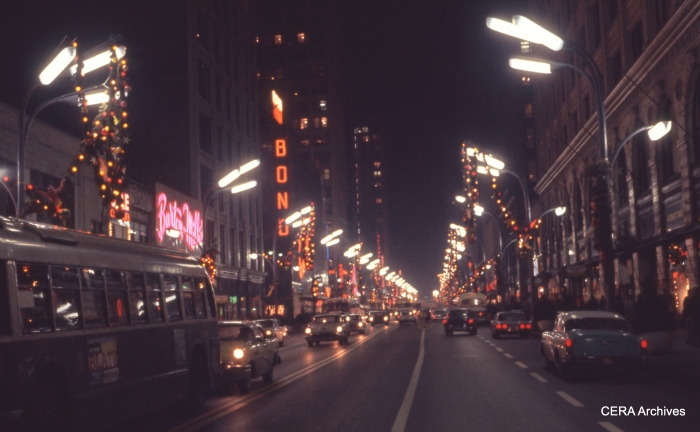
State Street at night in December 1959.
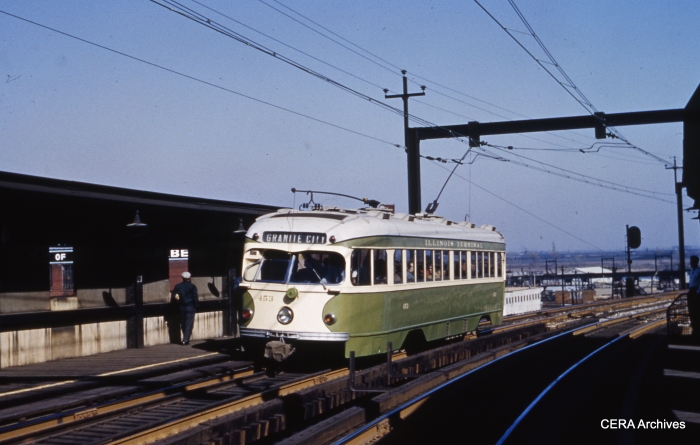
Illinois Terminal 453 at North Market and Broadway in October 1953. Today, we would consider this “light rail.”
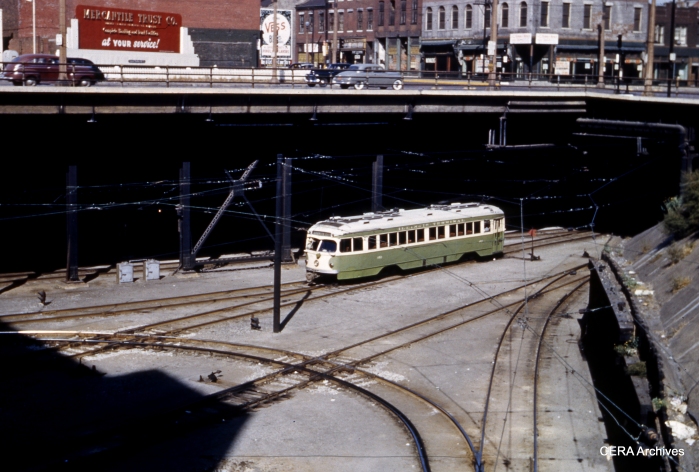
Illinois Terminal double-end PCC 452 at 12th and Washington in St. Louis, leaving the short subway on its way to Granite City on October 12, 1952.

IT 456 is St. Louis-bound in this October 12, 1956 photo taken in Granite City. Hundley Pontiac, seen at left, was a fixture of the city for many years.
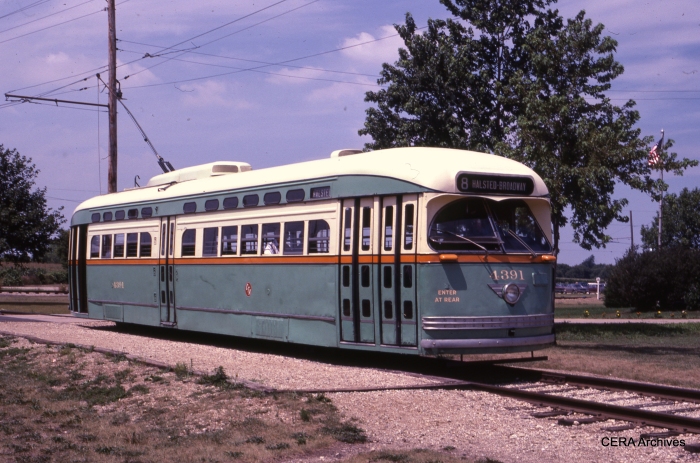
PCC 4391 in service at Union in the mid-1980s. (David Sadowski Photo – CERA Archives)